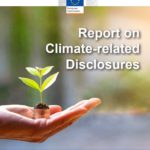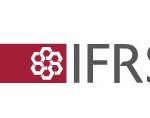ISO has now published on its website the new work item proposal on social
responsibility.
The basic process that is in place is as follows:
(1) So far, there has been an ISO Social Responsibility Advisory Group report and recommendations (spring, 2004), the June 2004 Stockholm SR conference, the June 29, 2004 decision of TMB to develop an International Standard giving guidance on social responsibility through a newly constituted Working Group, and the September, 2004 decision that Sweden and Brazil should co-chair that group (see previous postings of this Forum).
(2) The ISO Technical Management Board (TMB) has now prepared a "New Work Item Proposal" for consideration by the approximately 145 ISO national member bodies (that is, the national standards bodies of countries around the world). These member bodies will now undergo consultations with their stakeholders within their jurisdictions (through national mirror committees), and submit their votes to ISO, by no later than January 7, 2005. Note that it is the ISO national member bodies (i.e., the national standards bodies) of jurisdictions around the world who submit the vote of
their jurisdiction. Thus, Forum members who would like to participate in this voting process should contact their national member bodies to learn how they can do so. [Information regarding participation by international bodies is provided below in point (6)].
(3) In recognition that the topic of social responsibility breaks new ground in terms of issues addressed by ISO and stakeholders who may wish to participate in the standards development deliberations, the TMB has adapted its processes, and provided operational guidance to the new working group.
This information is provided in supporting material to the New Work Item Proposal (and is part of the downloadable package provided).
(4) TMB has also developed suggestions for issues to be discussed by the working group at its first meeting (likely to be early in 2005). This is part of the downloadable package provided).
(5) TMB has indicated that national member bodies are to nominate the names of up to six experts to participate in the ISO SR Working Group deliberations, and the suggestion is that they come from each of the following six categories:
– industry
– government
– labour
– consumers
– NGOs
– others
TMB acknowledges that each national member body should have some flexibility in terms of nominations, but urges that not more than two experts from any one particular area be nominated (i.e., no more than two from industry, or government, or labour, or consumers, or NGOs, or others). National member bodies are to provide short profiles of each of their nominated experts.
This is intended to assist the WG, in view of the fact that they expect that a number of different task groups will be created under the WG, and the profiles will assist in determining where the nominated individual’s expertise is best suited.
(6) With respect to participation by international organizations, invitations will be issued by ISO to a number of international organizations to nominate up to two experts to serve on the working group. Such organizations will be considered to be as D-liaison organizations with the working group, as defined in the ISO/IEC Directives. Other interested international or broadly-based regional organizations may apply at any time for liaison status and these will be considered case by case by the TMB, again in accordance with the ISO/IEC Directives. The TMB’s overall aim will be to ensure an appropriate balance of stakeholder representation within the working group.
Category D liaison is open to any relevant international or broadly-based regional organization that wishes to participate in this work. Each candidate for category D liaison is asked to provide a profile of the organization, its purpose, its activities, necessity of its participation in ISO’s SR standard development work, and its intended contribution to such work. Requests for category D liaison should be submitted to the TMB Secretary.
———–
The following is an executive summary of suggested operating procedures for the SR Working Group (this is part of the downloadable material provided by ISO at the above-cited URL).
Operating procedures of the SR working group – Executive summary
Taking into account the report and recommendations of the TMB’s Advisory Group on Social responsibility, which were echoed during the international conference on Social responsibility (SR) held in Stockholm in June 2004, the Technical Management Board (TMB) decided that this work would be best conducted in a working group directly under the responsibility of the TMB. This mechanism was considered to be the most appropriate method of ensuring that all stakeholders can participate as individual experts on an equal basis in the working group, whilst it was also recognized that the generally desired outcome was for an International Standard providing guidance on SR.
This implies that the normal ISO approval processes for International Standards will be applied. The purpose of this executive summary is to explain some provisions of the general operating procedures for the working group and for the development process of the proposed International Standard.
At its meeting in Geneva in September 2004, the TMB, which had issued a call to all ISO member bodies to make offers for twinned (developed country-developing country) leadership of the working group, assigned this responsibility to the ISO member bodies for Brazil (ABNT) and Sweden (SIS). At that same meeting, it finalized the documentation to be issued to the ISO member bodies (principally a formal proposal for new work as well as the attached supporting documentation concerning the organization of the work).
Consistent with the normal ISO procedure for approval of new work, the new
work item proposal will be issued to all ISO member bodies for voting during a period of three months and the normal acceptance criteria for new work (approval by a majority of the members voting and a commitment by at least five members to participate actively in the work) will be applied. Simultaneously, in order to strive towards a balance of stakeholders, member bodies will be encouraged to the extent possible to nominate up to six experts, one for each of six defined stakeholder categories. Member bodies nominating experts will be recorded as P-members for the purpose of voting at later stages of the process.
Also simultaneously, invitations will be issued to a number of international organizations to nominate up to two experts to serve on the working group. Such organizations will be considered to be in D-liaison with the working group, as defined in the ISO/IEC Directives.
Other interested international or broadly-based regional organizations may apply at any time for a D-liaison and these will be considered case by case by the TMB, again in accordance with the ISO/IEC Directives. The TMB’s overall aim will be to ensure an appropriate balance of stakeholder representation within the working group. It will be the responsibility of ABNT-SIS to organize and convene the first meeting of the working group. In accordance with the normal ISO working methods, the working group will be charged with developing a draft standard that represents a consensus of the views of the experts participating in the working group.
At the same time, it is expected that the member bodies which nominate experts will also establish national mirror committees and that these mirror committees will establish national positions on the successive drafts developed by the working group.
The ultimate aim, obviously, is that the consensus reached in the working group is
validated through the member body votes on the draft International Standard (DIS).
Therefore, while the participants in the working group will contribute as individual experts, and will not be expected to represent the national consensus position, they will nevertheless need to bear in mind national positions on issues that emerge in the working group.
In particular, at an appropriate moment, the working group may wish to validate its
emerging consensus against the national consensus positions by requesting that a draft
be issued as a committee draft (CD). In such a case, the P-members mentioned above
will be invited to vote and comment on the CD and the D-liaison organizations will be
invited simultaneously to submit their own comments.
It will be for the leadership of the working group to judge when consensus has been
reached and whether there is a strong likelihood that voting on a DIS would be successful. At that stage, the final draft will be submitted to the Central Secretariat for issue as a DIS. [Draft International Standard]
The usual voting period and acceptance criteria as specified in the ISO/IEC Directives will apply. Although approval is determined by ISO member body votes, it is also expected that the provision in the Directives to seek full and formal backing of liaison organizations on DIS, be explicitly implemented in this particular case.
Assuming that the outcome of the DIS ballot is positive, the leadership of the working
group will need to decide on how best to address any comments received, according to their number and nature, but it is likely that these would need to be reviewed in the
working group itself. The intent at this stage is to establish the text of the final draft International Standard (FDIS) and a report of voting indicating all comments received and the actions taken on them (and in particular the justifications for rejection of any comments).
If unanimous approval of the DIS is obtained, the document may proceed directly to
publication. Otherwise, as is usual, the FDIS will be issued for voting, together with the report of voting on the DIS, in accordance with the ISO/IEC Directives, again seeking the full and formal backing of liaison organizations, and with the usual acceptance criteria applying. If approved, the FDIS, subject to any editorial corrections, will be published as an International Standard. The planned overall development timeframe is in accordance with ISO’s 36-month standards development track.
——–
end of executive summary document



